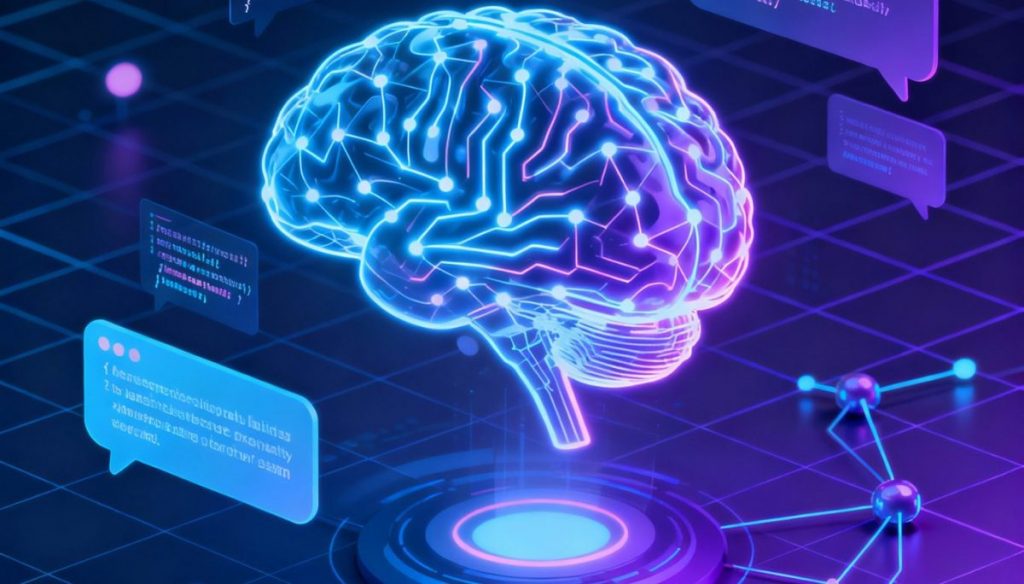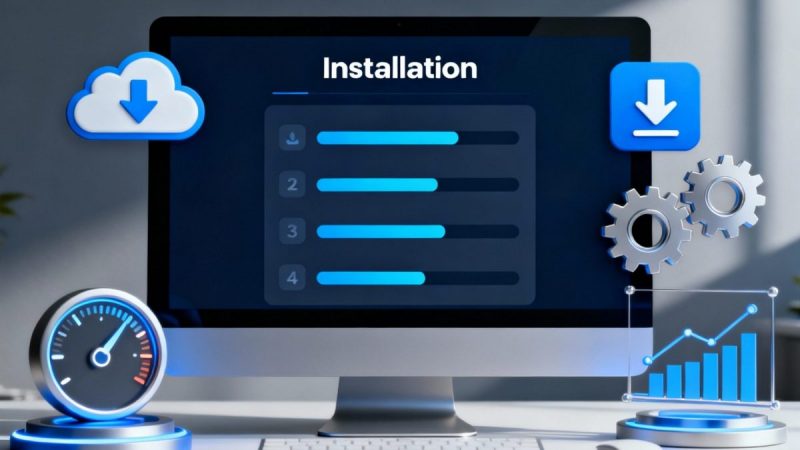LLM Apps: Revolutionizing Business and Technology Through Intelligent Applications

Large Language Model (LLM) applications represent a transformative force in modern software development, leveraging the power of artificial intelligence to create intelligent, context-aware solutions that enhance user experiences and streamline business operations. These applications harness pre-trained language models to understand, process, and generate human-like text, enabling unprecedented capabilities across diverse industries and use cases.
Understanding LLM Applications
LLM apps are software solutions built around large language models—sophisticated AI systems trained on vast datasets to understand and generate human-like text. Unlike traditional software that follows predetermined programming logic, LLM applications are probabilistic, generating responses based on learned patterns from extensive training data. This fundamental difference enables them to handle complex, nuanced tasks that require contextual understanding and natural language processing.
The architecture of modern LLM applications typically consists of several key components working in harmony. The core includes a user interface for input collection, the LLM model itself, and sophisticated prompt construction tools. Input enrichment systems incorporate data sources, embedding models, vector databases, and data filters to provide relevant context. Additionally, responsible AI tooling ensures safe and reliable outputs through content classification, caching mechanisms, and comprehensive telemetry services.
Core Applications and Use Cases
Content Generation and Marketing
LLM applications excel at automating content creation across multiple formats. Organizations use these tools to generate blog posts, social media updates, marketing campaigns, and product descriptions while maintaining consistent brand voice and adapting messages to specific audiences. Marketing teams report significantly improved productivity, with some experiencing up to 30% faster content production cycles.
Customer Support and Service
Intelligent chatbots powered by LLMs are revolutionizing customer service by providing 24/7 support with human-like responses. These systems can understand context, analyze sentiment, and escalate complex issues appropriately. Companies implementing LLM-powered customer support report a 14% increase in agent productivity, allowing human representatives to focus on more complex inquiries.
Code Development and Programming
LLMs are transforming software development by assisting programmers with code generation, debugging, and optimization. Tools like GitHub Copilot demonstrate how LLMs can provide intelligent code completion, suggest improvements, and even translate code between different programming languages. Developers using AI-assisted coding tools report a 55% increase in coding efficiency.
Business Intelligence and Analytics
Organizations leverage LLMs to analyze vast volumes of data and extract actionable insights. These applications can summarize market trends, generate business forecasts, and provide decision-makers with comprehensive analyses in easily understandable formats. This capability enables faster, more informed decision-making in dynamic business environments.
Legal and Compliance
Law firms and corporate legal departments utilize LLMs to review contracts, summarize case files, and identify key legal clauses. This application reduces manual effort, minimizes oversight risks, and accelerates document analysis. Legal professionals can process significantly more documents in less time while maintaining accuracy and thoroughness.
Popular Development Frameworks
The LLM application ecosystem is supported by several robust frameworks that simplify development and deployment:
LangChain stands out as the most versatile framework, offering a unified platform for orchestrating various components of LLM applications. It provides standardized interfaces for working with multiple LLMs simultaneously, supports diverse data sources, and includes tools for prompt engineering and conversation management.
LlamaIndex specializes in connecting LLMs to diverse data sources through sophisticated indexing and retrieval mechanisms. It’s particularly effective for building search and retrieval applications with hierarchical indexing capabilities.
Haystack focuses on search and retrieval applications, excelling in scenarios requiring fast querying over large datasets. It’s especially valuable for legal research, document analysis, and knowledge management systems.
HuggingFace Transformers provides extensive access to pre-trained models and streamlines the process of integrating various LLM architectures into applications. It offers comprehensive tools for model deployment and fine-tuning.

Business Benefits and Value Proposition
Operational Efficiency
LLMs streamline repetitive and time-consuming tasks, allowing employees to focus on higher-value activities. Organizations report significant productivity improvements, with some achieving 30% cost reductions in customer service operations. The automation of content creation, data analysis, and routine communications frees up human resources for strategic initiatives.
Enhanced Customer Experience
LLM applications enable personalized interactions at scale, analyzing customer data to deliver targeted recommendations and tailored communications. This personalization capability drives higher engagement rates and improved customer satisfaction, with 80% of customers showing a preference for companies offering personalized experiences.
Accelerated Innovation
By automating ideation, concept testing, and feedback analysis, LLMs contribute to faster product development cycles. Businesses can explore new markets more efficiently, refine services based on real-time insights, and adapt quickly to market demands.
Cost Optimization
The implementation of LLM applications typically results in substantial cost savings through automation and efficiency gains. Organizations report average cost reductions of 25-40% in areas where LLMs are deployed effectively, particularly in customer service, content production, and data analysis functions.
Challenges and Limitations
Accuracy and Hallucination
One of the most significant challenges facing LLM applications is the tendency to generate plausible but incorrect information, known as “hallucination”. Since LLMs generate responses based on learned patterns rather than verified facts, they may provide confident-sounding answers that are factually wrong. This limitation is particularly problematic in critical applications like healthcare, legal advice, or financial planning.
Integration Complexity
Many LLM applications struggle with seamless integration into existing enterprise systems. Limited connectivity with transactional systems, databases, and legacy infrastructure can hinder the deployment of comprehensive LLM solutions. Organizations often need significant technical investment to bridge these integration gaps.
Contextual Understanding Limitations
LLMs frequently struggle to maintain contextual understanding over extended interactions. While they can generate coherent responses within immediate context, they may lose track of conversation threads or fail to remember specific details from earlier exchanges, leading to fragmented user experiences.
Privacy and Security Concerns
Enterprise adoption of LLMs raises significant privacy and security questions. Many LLM services operate as cloud-based solutions, potentially exposing sensitive business data to external providers. Organizations with strict compliance requirements may find it challenging to implement LLM solutions that meet their security standards.
Cost Uncertainty
The computational requirements for running sophisticated LLM applications can result in unpredictable costs, especially at scale. Organizations must carefully consider the long-term financial implications of LLM deployment, including infrastructure costs, API usage fees, and ongoing maintenance expenses.
Emerging Trends and Future Outlook
Domain-Specific Specialization
The trend toward fine-tuning LLMs for specific industries is accelerating. Healthcare, finance, legal, and other specialized sectors are developing domain-specific language models that better understand industry terminology, regulations, and requirements.
Multimodal Capabilities
Future LLM applications will integrate text, image, video, and audio processing capabilities. This evolution will enable more comprehensive AI assistants capable of understanding and responding to diverse input types, creating richer user experiences.
Enhanced Collaboration Features
LLM applications are evolving to support collaborative workflows, enabling multiple users to work together on projects with AI assistance. These systems will facilitate better communication, code review processes, and knowledge sharing among team members.
Improved Explainability
As LLMs become more sophisticated, the demand for transparent, explainable AI increases. Future LLM applications will provide better insights into their reasoning processes, building user trust and enabling more informed decision-making.
Edge Computing Integration
The integration of LLM capabilities into edge computing environments will enable faster, more responsive applications with reduced latency. This trend will be particularly important for real-time applications and scenarios with connectivity constraints.
Industry Impact and Adoption
The financial sector leads LLM adoption, using these applications for market analysis, risk assessment, and fraud detection. Healthcare organizations leverage LLMs for patient interaction management and administrative streamlining. Marketing departments across industries report substantial productivity gains from AI-powered content generation and campaign optimization.
Educational institutions are implementing LLMs to create personalized learning experiences and provide real-time feedback on student performance. Legal firms achieve significant efficiency improvements through automated document analysis and contract review processes.
E-commerce businesses particularly benefit from LLM applications in customer service automation, product recommendation systems, and inventory management. The retail sector reports improved conversion rates and reduced operational costs through intelligent customer interaction systems.
Conclusion
LLM applications represent a fundamental shift in how organizations approach software development and business process optimization. Despite current challenges around accuracy, integration complexity, and security concerns, the technology continues to evolve rapidly, offering increasingly sophisticated solutions for diverse business needs.
The key to successful LLM application deployment lies in understanding both the capabilities and limitations of the technology, choosing appropriate frameworks and architectures, and implementing robust governance and monitoring systems. Organizations that strategically integrate LLM applications while addressing their inherent challenges position themselves to capture significant competitive advantages through enhanced efficiency, improved customer experiences, and accelerated innovation cycles.
As the technology matures, we can expect to see more specialized, reliable, and integrated LLM applications that become increasingly essential to business operations across all industries. The future of LLM applications promises even greater capabilities, with multimodal processing, enhanced accuracy, and seamless enterprise integration driving the next wave of digital transformation.






